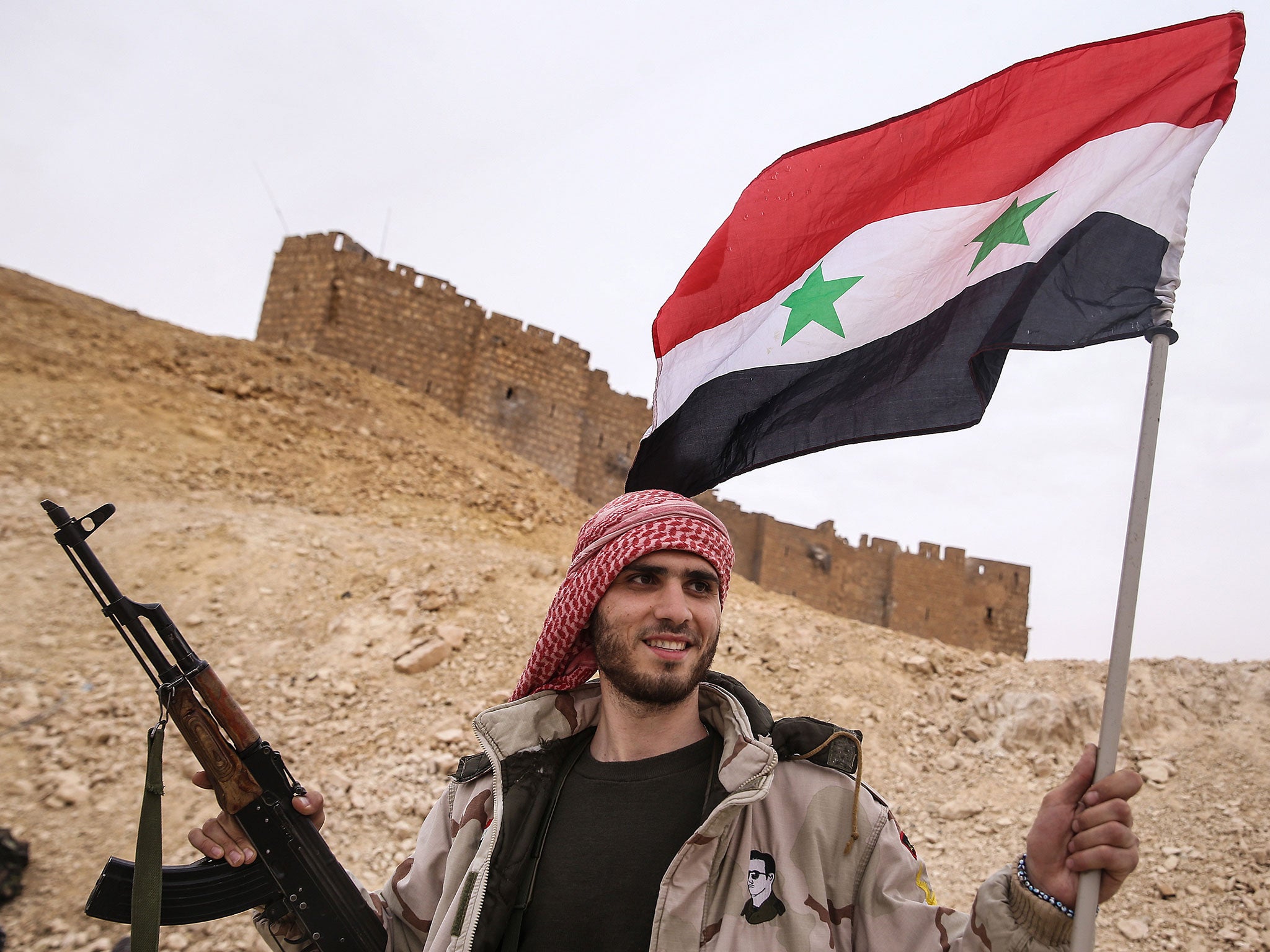Syrian army's recapture of Palmyra may mean Isis has lost the battle – but it's not lost the war yet
The successful advance of the army marks an important moment for Assad, but it will be difficult for to them to gain much ground further east

Your support helps us to tell the story
From reproductive rights to climate change to Big Tech, The Independent is on the ground when the story is developing. Whether it's investigating the financials of Elon Musk's pro-Trump PAC or producing our latest documentary, 'The A Word', which shines a light on the American women fighting for reproductive rights, we know how important it is to parse out the facts from the messaging.
At such a critical moment in US history, we need reporters on the ground. Your donation allows us to keep sending journalists to speak to both sides of the story.
The Independent is trusted by Americans across the entire political spectrum. And unlike many other quality news outlets, we choose not to lock Americans out of our reporting and analysis with paywalls. We believe quality journalism should be available to everyone, paid for by those who can afford it.
Your support makes all the difference.The recapture of Palmyra by the Syrian army is an important defeat for Isis, but does not mean it is disintegrating as it is pressed back into the self-declared Caliphate.
Although Isis is reported to have left the bodies of 400 of its fighters in and around the ancient city, it appears to have withdrawn most of its forces before they were destroyed. This is inkeeping with its tactics over the last year whereby it does not fight to the last man defending fixed positions against prolonged air strikes by Russian and US-led aircraft.
The successful advance of the Syrian army – though just how far it is in control of the Palmyra area is still unclear – marks an important victory for President Bashar al-Assad just as the loss of the city ten months ago underlined the ebbing strength of his forces. The reversal of his military fortunes stem from the start of the Russian air campaign on 30 September last year and a less well-publicised increase in support from the Shia axis led by Iran and including Hezbollah in Lebanon and Iraqi paramilitary units. Despite the official end of Russian military intervention, its aircraft evidently played a central role in retaking the city.
A striking feature of the Isis victory in May last year was that its fighters were able to advance without being bombarded by US aircraft because the US did not want to be accused of doing anything that would help the Assad government, whom it accused of never fighting Isis. The claim was in part propagandistic since the Syrian army had suffered a series of defeats at the hands of Isis in 2014 as was shown by Isis atrocity videos in which Syrian soldiers taken prisoner are shown being decapitated or shot.
Western governments and the Syrian opposition accused Russia of focusing solely on non-Isis targets during its air campaign in support of the Syrian army. In reality, the Russians launched air strikes on whatever elements of the armed opposition that were the greatest threat to Syrian army positions in all parts of the country. These included air attacks in northern Latakia province, around Aleppo and east of Homs and Hama. At the high point of its advance last year, Isis was able to threaten the main north-south M5 highway linking Damascus and Homs and, more recently, briefly cut the alternative route linking Homs to Aleppo.
Isis has lost a battle, but it has not necessarily lost the war and it will be difficult for the Syrian army to advance east of Palmyra as it presses into hardcore Syrian Arab areas and will become vulnerable to guerrilla attacks. The same is true of the heavily populated rural Sunni areas of Idlib province and east Aleppo where the armed opposition are coming under pressure from Syrian army and the Syrian Kurdish People’s Protection Units (YPG).
The political and military situation in Syria and Iraq remains unstable with local and foreign players all pursuing different strategies. The Iraqi and Syrian Kurds have provided ground forces that are closely allied to the US-led air campaign, but both are conscious that the international support they are currently enjoying will not continue after the defeat of Isis. They will also be vulnerable to re-empowered central governments in Damascus and Baghdad seeking to reassert control over their Kurdish provinces or areas in dispute better between Kurds and Arabs.
Russia is showing that it is happy to act in concert with the US in arranging a “cessation of hostilities” on 27 February between the Syrian army and the armed opposition – aside from Jabhat al-Nusra and Isis. It is seeking to give substance to peace negotiations in Geneva which envisage some form of power sharing in Syria either on a geographical or institutional basis. But this is not a policy favoured by Iran or the Shia axis which in the long term remain the Assad’s government’s most committed allies. The civil war is far from over.
Patrick Cockburn’s 'Chaos and Caliphate: Jihadis and the West in the Struggle for the Middle East' (OR Books) is published this month
Join our commenting forum
Join thought-provoking conversations, follow other Independent readers and see their replies
Comments